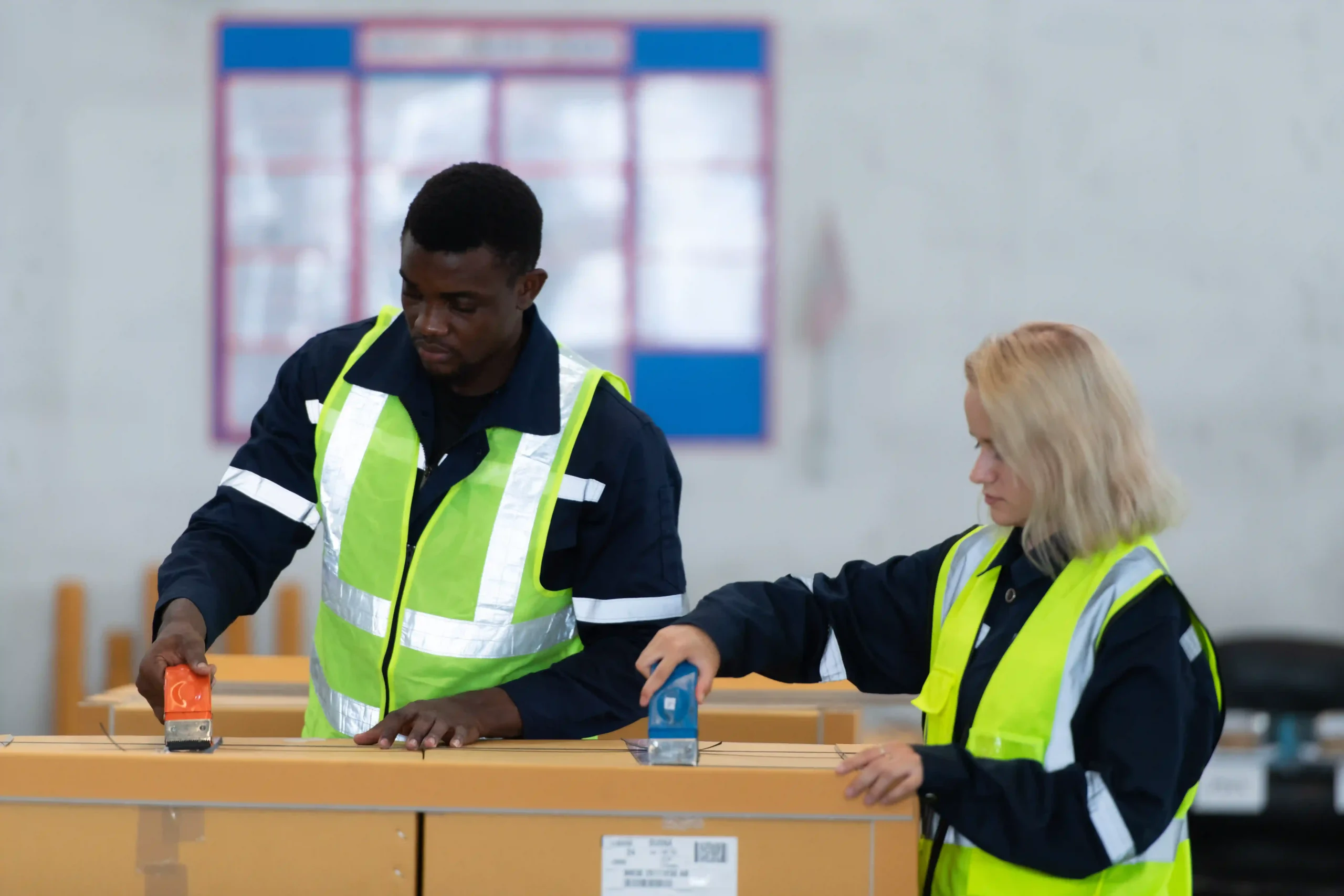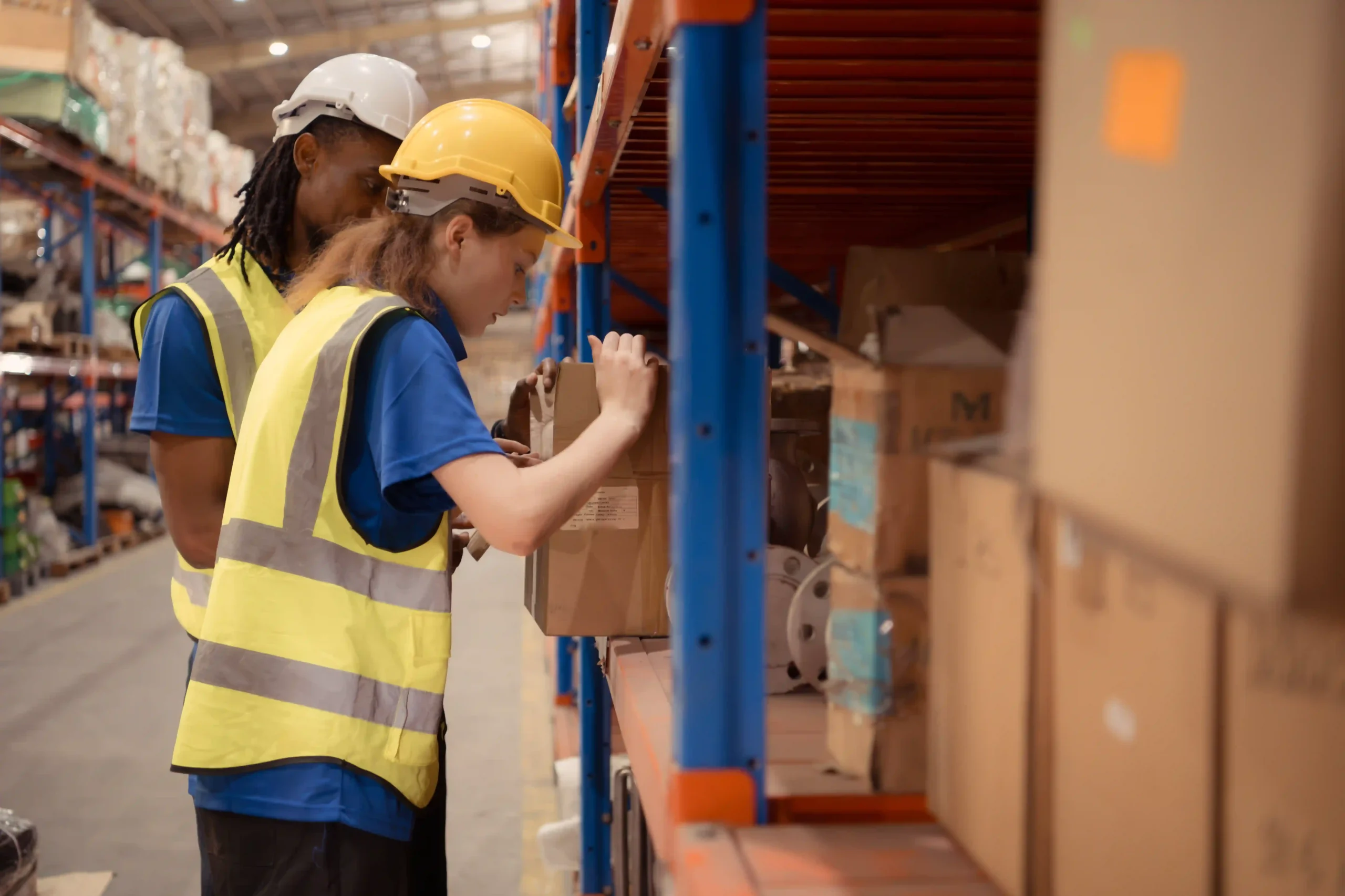After over 35 years running Tri-Link FTZ, a third-party logistics and Foreign Trade Zone provider, I’ve seen just about every type of warehouse setup imaginable. But one process that continues to be a game changer—especially in today’s eCommerce-driven world—is pick and pack. So let’s get to the basics.
Pick pack meaning refers to a warehouse method where individual items are selected (picked) from inventory and then placed into packaging (packed) to be shipped directly to the customer. This is a core part of modern fulfillment strategies, especially for businesses shipping small or personalized orders.
Unlike bulk shipping or freight forwarding, pick and pack is item-level fulfillment. It’s about agility, accuracy, and speed.
When a customer places an online order, each product must be located, retrieved, verified, packed, and labeled—often within just a few hours. This process might sound simple, but as your order volume grows, it becomes one of the most complex and cost-sensitive parts of your logistics pipeline.

At Tri-Link FTZ, we break down the pick and pack process into four main stages, and each one is mission critical to keeping fulfillment running smoothly. It starts with the order receipt—once a customer clicks “Buy Now,” their order is pushed into the warehouse management system (WMS).
This generates a digital packing slip that details exactly what needs to be picked and where those items are located. From there, warehouse associates begin picking.
Using either handheld barcode scanners or paper slips, they move through the warehouse to gather items. This step eats up the most time, especially in large facilities, so route optimization becomes a top priority.
After picking comes packing. Here, workers verify the contents, inspect for damage, and place the items into shipping boxes with protective materials.
Labels are printed, applied, and finally, everything moves to the shipping dock for dispatch. The beauty of pick and pack is its flexibility.
Whether you’re shipping a single t-shirt or assembling a custom subscription box with five unique SKUs, the process adjusts. But that flexibility only works if you have tight coordination, training, and the right technology backing your team.
If you’ve ever wondered why some businesses thrive during peak season while others fall apart—it often comes down to their pick and pack system. When well-managed, this process does more than move boxes; it builds customer trust and improves margins.
One of the biggest advantages is speed. In a world of two-day or even same-day shipping, time is everything.
A good pick and pack system reduces turnaround by making each step more efficient. Accuracy is just as important.
Mis-picks lead to returns, complaints, and extra shipping costs. Our trained teams use barcode scanners and triple-checks to ensure that what goes into the box matches what the customer ordered.
This keeps our error rates well below industry average and our clients’ customer satisfaction scores high. There’s also a big financial upside.
Pick and pack allows you to process a wide variety of order sizes without needing to repack pallets or outsource to multiple vendors. By keeping everything under one roof—picking, packing, and shipping—you reduce waste, minimize handling costs, and keep freight expenses low.
Plus, if you’re working with a 3PL like Tri-Link, you also gain scalable labor during busy seasons without increasing your overhead.
Not every warehouse operates the same, and that’s where picking strategies come in. Choosing the right one can save hours per day in labor and miles in walking distance.
We often help clients select between four core methods:
Method | Best For | Efficiency Level |
Piece Picking | Small warehouses | Low |
Batch Picking | Moderate order volumes | Medium |
Zone Picking | Large operations with zones | High |
Wave Picking | High-volume, complex orders | Very High |
Piece picking is the simplest—workers pick one order at a time, great for small businesses but inefficient at scale. Batch picking allows teams to pick several orders simultaneously, increasing throughput for growing retailers.
Zone picking divides the warehouse into segments; workers focus on one zone, passing orders between zones until complete. And then there’s wave picking, which combines zone and batch picking for the most sophisticated operations.
In our facility, we often use a mix of these depending on client needs. For example, during a product launch, batch picking helps us move dozens of similar orders quickly.
But for subscription boxes with different configurations, zone picking offers tighter control and better accuracy.

In today’s fast-paced logistics world, the pick pack meaning can’t be separated from technology. Without the right tools, even the best-trained team can’t compete.
At Tri-Link FTZ, we’ve invested in systems that increase speed, reduce human error, and support real-time tracking for both our clients and their customers. One of the most valuable tools is a Warehouse Management System (WMS).
This software organizes inventory, assigns pick lists, tracks shipments, and optimizes workflows. It’s the brain of the operation.
Alongside that, barcode scanners allow our team to instantly verify SKUs and confirm picks. These small handheld devices significantly reduce mispicks, which is crucial for keeping error rates low.
We’ve also seen huge improvements through mobile devices and voice-picking systems. With voice commands guiding pickers through the warehouse, hands are free and focus remains sharp.
For larger operations, technologies like pick-to-light or automated conveyor belts speed up movement and minimize downtime. These tools help us do more with less—especially during peak times when accuracy and volume go hand in hand.
Even simple data tracking makes a difference. We analyze order completion times and bottlenecks daily, which lets us fine-tune our processes week to week.
The more we can automate intelligently, the more we deliver on our promise: fast, flawless fulfillment. Read more here.
It’s easy to assume all fulfillment looks the same—but the pick pack meaning sets this method apart from others like bulk shipping or drop shipping. With bulk shipping, you’re moving large quantities of the same item, usually in cases or pallets.
There’s little flexibility, and it’s more useful for B2B or wholesale. Drop shipping, on the other hand, passes the responsibility of picking and packing to the manufacturer or supplier.
While this can reduce your warehousing costs, it also means you lose control over inventory quality, packaging standards, and shipping speed. Pick and pack is about maintaining that control—while still being agile.
You hold inventory, manage fulfillment, and can brand the customer experience from box to doorstep. That’s why so many of our clients choose this model.
It balances customization with efficiency and gives them the tools to compete with giants like Amazon. What we tell our clients is this: if you want consistent, fast shipping and a say in how your product reaches your customer, then pick and pack is the fulfillment method that gets you there.
We work with a wide range of businesses at Tri-Link FTZ, and pick and pack isn’t just for large brands. In fact, it’s one of the most flexible services we offer, which is why it’s so popular. eCommerce sellers benefit hugely.
Whether you’re selling apparel, beauty products, electronics, or niche gadgets, our pick and pack services ensure every order is filled quickly and accurately. Subscription box companies are another perfect fit.
These businesses often need to bundle a variety of SKUs in one shipment, changing monthly. Our team manages these custom combinations with care.
Seasonal businesses or those running limited-time promotions can also scale up and down with ease by tapping into our trained warehouse teams. Startups or small businesses that don’t yet have the infrastructure for their own warehouse love pick and pack too.
They get professional fulfillment without the overhead. And for global sellers?
Pick and pack helps localize delivery, reduce customs issues, and give end customers a seamless experience. The point is—if you ship physical goods to customers, there’s a strong chance pick and pack is your most efficient fulfillment option. Read more here.

As much as I believe in the power of pick and pack, it’s not without its challenges. One of the biggest we see is mispicks—grabbing the wrong item or quantity.
That’s why we emphasize barcode verification and staff training. Every error costs money and reputation.
Another issue is inefficient warehouse layout. If your team has to walk a mile to pick an order, you’re burning time and money.
That’s why we optimize pick routes and position high-volume items near packing stations. Inventory inaccuracies also creep in without regular audits or automated tracking.
We use real-time stock updates and cycle counts to stay ahead of the curve. Plus, high turnover or seasonal staff can introduce mistakes if they’re not trained well, which is why we standardize our onboarding process with digital training modules.
Lastly, scalability can be tough. That’s where our infrastructure shines.
Because Tri-Link FTZ is designed to flex with demand, our clients don’t hit bottlenecks during Black Friday or product launches. Instead, they scale up with confidence.
As a third-party logistics provider, we specialize in taking the pressure off our clients by handling everything from receiving inventory to pick and pack to final delivery. When you partner with a 3PL like Tri-Link FTZ, you’re not just outsourcing labor—you’re gaining experience, infrastructure, and optimization.
Our team works as an extension of your business. We integrate with your platforms, provide real-time tracking, and ensure every order gets picked, packed, and shipped with precision.
This helps businesses focus on growth, not logistics. We also provide international shipping support, customs expertise, and Foreign Trade Zone advantages, which allow our clients to defer, reduce, or eliminate duties on imported goods.
That kind of savings adds up fast, especially for businesses operating across borders. With over three decades of experience, we’ve refined our systems to meet the highest standards.
That means faster setup, fewer headaches, and a better experience for your customers.
If you’re weighing the costs of pick and pack, it’s important to look at both direct and indirect savings. Yes, you’ll have expenses—labor, packaging, software—but the efficiency and accuracy you gain will save money in the long run.
We’ve seen clients cut their return rates in half by improving how orders are picked and packed. The key to smart investment is scaling wisely.
Start with the right picking strategy for your volume, and be open to upgrading. A small seller might begin with piece picking, but as orders grow, batch or wave methods become essential.
Use WMS tools early. Even a simple cloud-based system can dramatically increase order visibility and reduce delays.
Automate wherever possible, and plan your warehouse layout around movement—not just storage. And most importantly, partner with a team that knows how to grow with you.
At Tri-Link FTZ, we’ve helped businesses go from garage startups to international brands, and pick and pack has been at the heart of that journey.
Share this article
We have other resources available upon request as well as one-on-one support and personalized answers, just like our services.
Simply contact us anytime and we’ll get back to you to answer your questions and provide meaningful answers that show you how Tri-Link supports your logistics, reduces costs, and accelerates efficiency.
Tri-Link delivers exceptional FTZ and 3PL services tailored to your global trade needs.
Our solutions combine innovation, quality, and efficiency to exceed your expectations and meet your specific requirements.